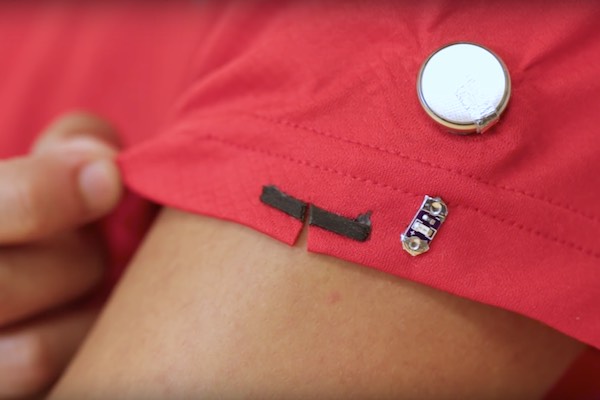
[Image above] Credit: JacobsSchoolNews; YouTube
Last week, Stephanie reported that an ORNL team led by ACerS member Parans Paranthaman developed a technique to additively manufacture permanent magnets, conserving rare resources through a quicker and more economical manufacturing process.
But that’s not all that magnetic materials are up to these days.
Engineers at the University of California San Diego have developed a magnetic ink that can be used to print batteries, circuits, and other devices that, if broken or damaged, can self-heal themselves in a matter of milliseconds.
The team developed the self-healing ink by loading it with neodymium microparticles, which are magnetic, and carbon black, which they added for its electrochemical properties.
Although the microparticles’ individual magnetic fields would otherwise cancel each other out, the engineers found that if they printed the ink in the presence of an external magnetic field, the microparticles orient themselves so that the device has two separate poles at either end.
That way, if the device is damaged, the two broken ends are attracted to one another, healing the device with no external forces, catalysts, or intervention.
According to the researchers, devices printed with the new ink can self-heal gaps as wide as 3 mm and can self-heal in about 50 milliseconds, an impressive achievement in both distance and time when it comes to self-healing materials.
To show the versatility of such a self-healing ink, the team has printed batteries, electrochemical sensors, and wearable, textile-based electrical circuits so far.
According to a UCSD news release, “For example, nanoengineers printed a self-healing circuit on the sleeve of a T-shirt and connected it with an LED light and a coin battery. The researchers then cut the circuit and the fabric it was printed on. At that point, the LED turned off. But then within a few seconds it started turning back on as the two sides of the circuit came together again and healed themselves, restoring conductivity.”
Watch a few examples of the team’s self-healing devices in the short video below.
Credit: JacobsSchoolNews; YouTube
“Our work holds considerable promise for widespread practical applications for long-lasting printed electronic devices,” says Joseph Wang, director of the Center for Wearable Sensors and chair of the nanoengineering department at UC San Diego.
The open-access paper, printed in Science Advances, is “All-printed magnetically self-healing electrochemical devices” (DOI: 10.1126/sciadv.1601465).
